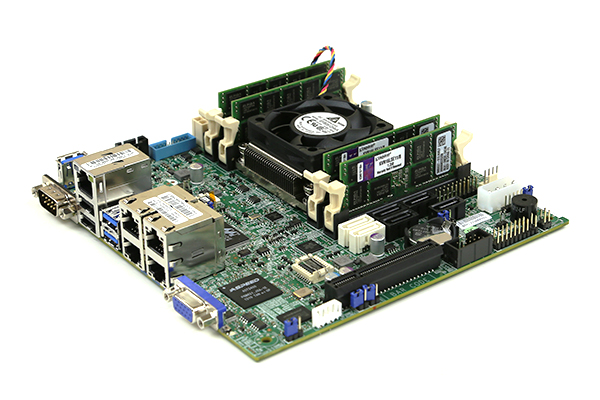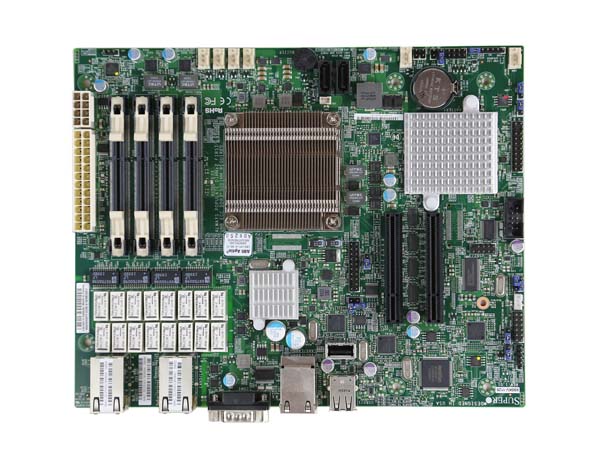Thread update:
The i5-750 was Dead-on-Arrival; since I sourced various components second hand from various sources with no spares to test, I got rid of it all and bought a Haswell Celeron G1820 + microATX mobo as a temporary solution.
Against expectations, the Haswell Celeron (dual core w/12GB RAM) runs virtualization needs (RHEL/CentOS 6 KVM) extremely well for the price (<100 usd for mobo + cpu).
However, I want to both consolidate all my current server needs (NAS, virtualization of home lab and various production systems such as a Samba4 Active Directory Domain Controller for home domain) as well as being extremely portable (mini-ITX).
For this purpose, I acquired a compact mini-ITX case (MS-TECH CI-70) and a SuperMicro 8-core Intel Avoton/C2750 motherboard with 4 DIMM slots (32GB max, 64GB possible if 16GB ECC DDR3 UDIMM sticks ever become affordable which I doubt as no Xeon supports them).
The reason for choosing the Avoton over a Xeon system (at a similar price, as Avoton is really overpriced), is fitting 32GB RAM or more into a compact mini-ITX case.
It's not ready yet (still waiting for case fans, 2x 2TB 2.5" SATA in mirror RAID, 1x 500GB mSATA for host OS and guest VMs, TPM module), and I'll post an update with pics when it's been completed.
The 60W max. DC-DC of the MS-TECH CI-70 (aka Iwill HT-60) appears to be of Chinese low-grade quality, for the long run it will be replaced with either another DC-DC such as a picoPSU or by using the SuperMicro on-board's DC-DC if that's feasible. Don't want to fry expensive server hardware due to a poor quality power supply blowing up.
The i5-750 was Dead-on-Arrival; since I sourced various components second hand from various sources with no spares to test, I got rid of it all and bought a Haswell Celeron G1820 + microATX mobo as a temporary solution.
Against expectations, the Haswell Celeron (dual core w/12GB RAM) runs virtualization needs (RHEL/CentOS 6 KVM) extremely well for the price (<100 usd for mobo + cpu).
However, I want to both consolidate all my current server needs (NAS, virtualization of home lab and various production systems such as a Samba4 Active Directory Domain Controller for home domain) as well as being extremely portable (mini-ITX).
For this purpose, I acquired a compact mini-ITX case (MS-TECH CI-70) and a SuperMicro 8-core Intel Avoton/C2750 motherboard with 4 DIMM slots (32GB max, 64GB possible if 16GB ECC DDR3 UDIMM sticks ever become affordable which I doubt as no Xeon supports them).
The reason for choosing the Avoton over a Xeon system (at a similar price, as Avoton is really overpriced), is fitting 32GB RAM or more into a compact mini-ITX case.
It's not ready yet (still waiting for case fans, 2x 2TB 2.5" SATA in mirror RAID, 1x 500GB mSATA for host OS and guest VMs, TPM module), and I'll post an update with pics when it's been completed.
The 60W max. DC-DC of the MS-TECH CI-70 (aka Iwill HT-60) appears to be of Chinese low-grade quality, for the long run it will be replaced with either another DC-DC such as a picoPSU or by using the SuperMicro on-board's DC-DC if that's feasible. Don't want to fry expensive server hardware due to a poor quality power supply blowing up.


 HAdn't pushed the OC too far this time.
HAdn't pushed the OC too far this time. Fractal Design Arc Mini R2, 3800X, Asus B450M-PRO mATX, 2x8GB B-die@3800C16, AMD Vega64, Seasonic 850W Gold, Black Ice Nemesis/Laing DDC/EKWB 240 Loop (VRM>CPU>GPU), Noctua Fans.
Fractal Design Arc Mini R2, 3800X, Asus B450M-PRO mATX, 2x8GB B-die@3800C16, AMD Vega64, Seasonic 850W Gold, Black Ice Nemesis/Laing DDC/EKWB 240 Loop (VRM>CPU>GPU), Noctua Fans.

Comment